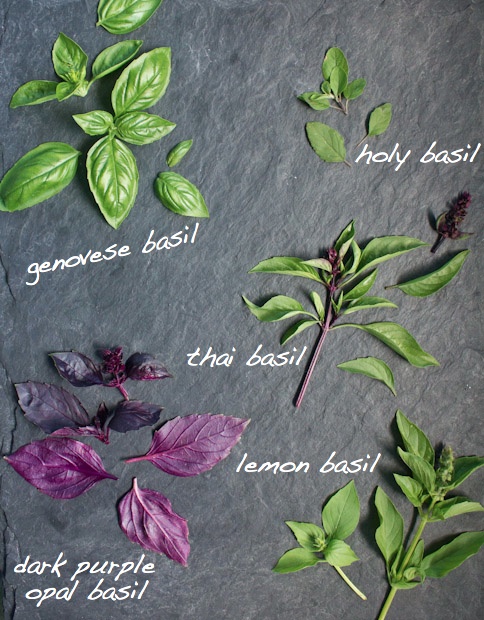 Basil has definitely arrived at the party. Bunch upon fragrant bunch are cramming tables at the markets. Not surprisingly we mostly think green and the same familiar scent and flavor when basil comes to mind. But there are loads of heirloom varieties that are becoming much easier to track down. (and grow yourself!) Try a new one on your next trip to the market. What's old will be a little newer again. Genovese Basil: The traditional Italian large-leafed sweet basil that we all know and love. Ideal for all things pesto, but best when the leaves are small. If the leaves are huge, blanch them quickly to remove some of the (too) strong flavor, making them more suitable for a delicately balanced pesto sauce. Holy Basil: Becoming more and more popular on menus with chefs, it is called holy basil primarily because it is used as an offering in South Asia in Hindu temples. Generally eaten raw, it has a bright, sweet smell, that is strikingly like Juicy Fruit gum. Thai Basil: This is those big fragrant sprigs strewn across your Thai green curry noodles, or tucked inside a Vietnamese summer roll. A deep magenta stem with small green leaves, it is much spicier than Italian basil. Heavy anise and clove flavors compliment Southeast Asian cuisines perfectly. Dark Purple Opal Basil: There are several purple basil varieties out there, and I always love to have at least one plant in my garden. Very similar in flavor to traditional Italian basil, it is a gorgeous way to add unexpected color to a dish. Thinly slice with green basil for instant edible confetti. Lemon Basil: Smaller leaves with a deep citrus smell and taste. A great compliment to seafood dishes, cocktails, and summer salads. | ||||||||||||||||
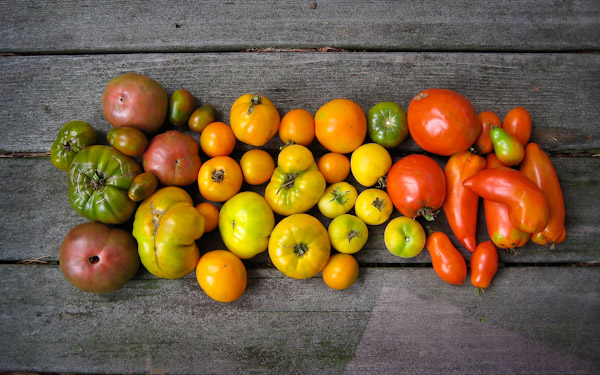 Despite the fact that I haven't seen but a mere patch of ground at our home since prior to Christmas, despite the fact that we still have a foot of snow almost everywhere I look, despite the fact that just looking at flip flops gives me chills, the eternal optimist in me spent the balance of the weekend ordering thousands of heirloom vegetable seeds for this year's crop at our little micro farm. Ideally, if the sun and rain cooperate, (and the sheep don't bust through the fence and help themselves to beds upon beds of gorgeous heirloom kale, leeks, peppers, brussels sprouts, beets, salad greens, and herbs, as happened briefly on one unfortunate day in October), those seeds and their resulting crop will then become a huge percentage of our food for the coming year, and many of the ingredients that I will cook for you here. If you are bitten by the promise of dirt under your fingernails and eating within a five minute radius bug too, here are a few of my best resources for heirloom seeds and plants. Each offer a mind-bloggling assortment of vegetables, fruit, and herbs. They also fiercely protect seeds of endangered heirloom varieties so generations to come will have a vast diversity of produce available as well. (more…) | ||||||||||||||||
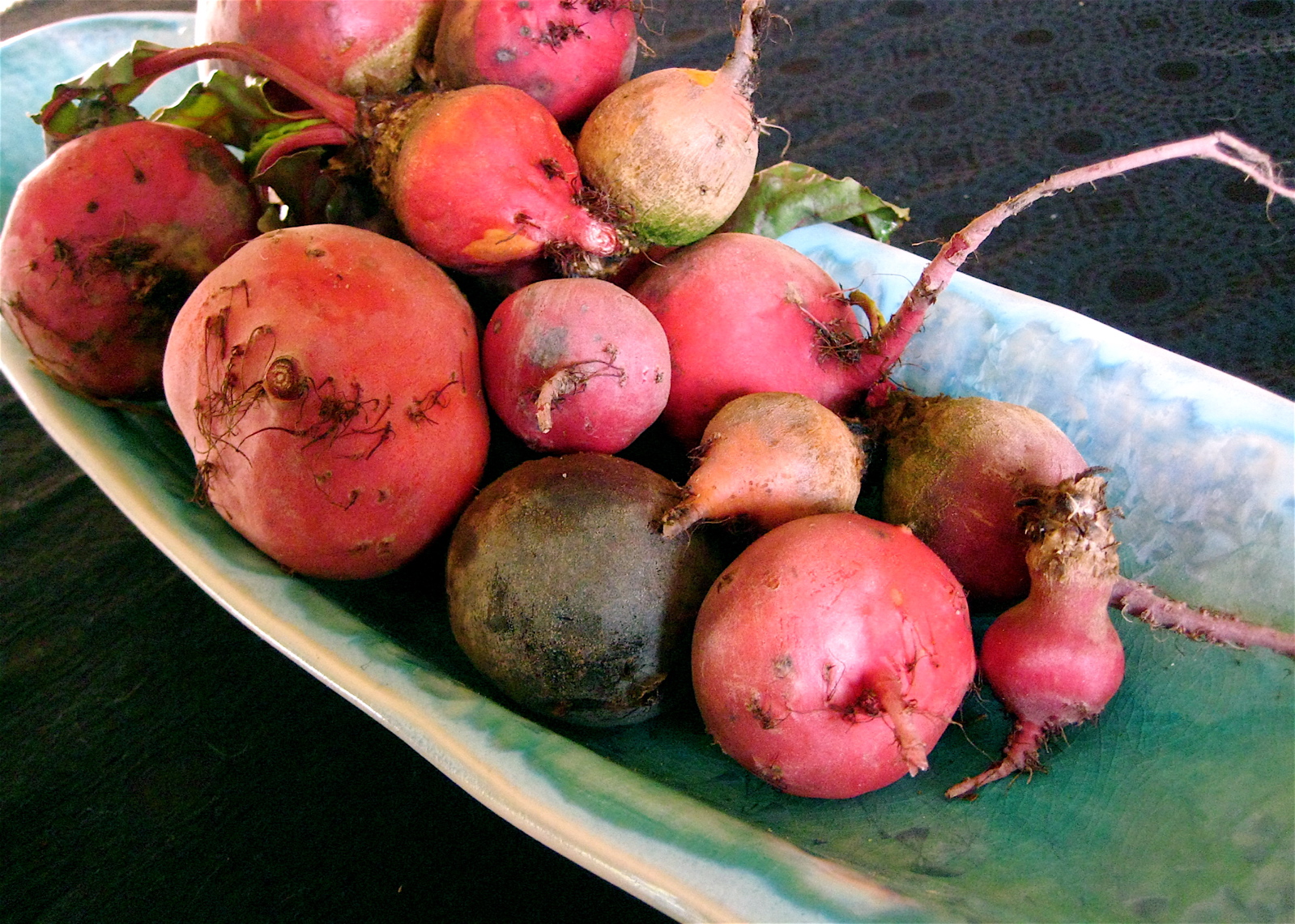 Last fall was complete chaos in our home. I was in the final weeks of getting my culinary degree, worrying more about my impending final exam than I had about anything else in my life to date, and was growing very weary of my year-long commute to the city, away from home and husband, for 5 nights a week. Every other detail seemed to go out with the compost. So it didn't surprise us much when a few months later, after a few good snowfalls, we both looked at each other and realized we had never harvested our second planting of our famed and favorite heirloom beets. While not a huge amount, there was about a bed and a half of beets still in the garden, now frozen solid to the ground. We treasure them, and were disappointed, and felt stupid and wasteful. Fast forward to yesterday's magnificent first kiss of spring weather. All I wanted to do was be outside, digging in something. I walked through one of our gardens, with the ground now visible for the first time in many months---and low and behold, there were tiny sprouts of beet greens peeking up from a variety of leafy debris. Further investigation, and a few dirty fingernails later, I discovered beets! A lot of beets! 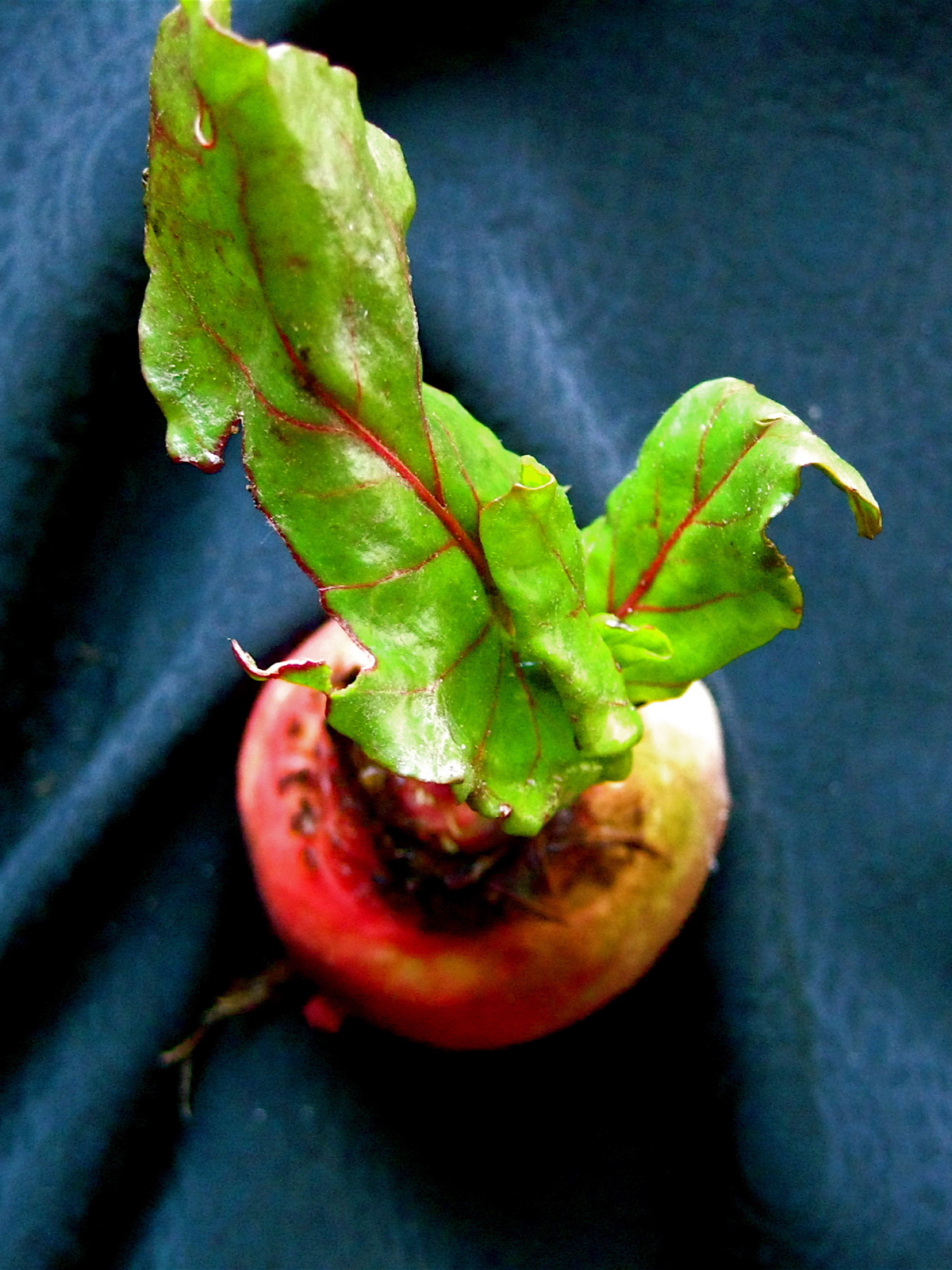 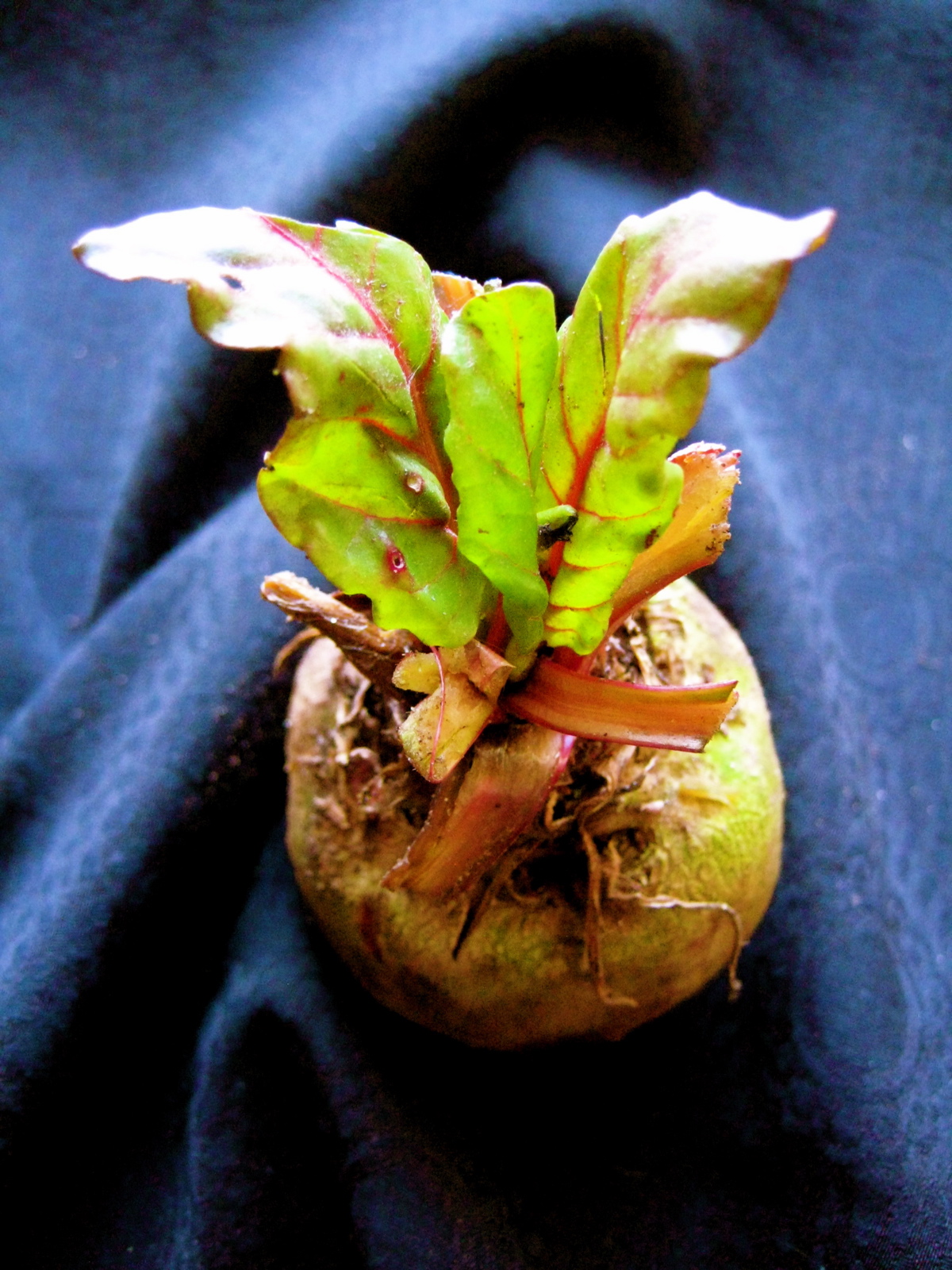 Our small second crop of golden, bull's blood, detroit dark red, and chioggia beets had successfully overwintered. Protected enough somehow by the mulch on top of the beds, and apparently benefiting from some very extended root systems, these beauties made it though, and managed to do so well enough that they now had the energy to start sprouting leaves again. Remarkable. And fresh beets for dinner in March. 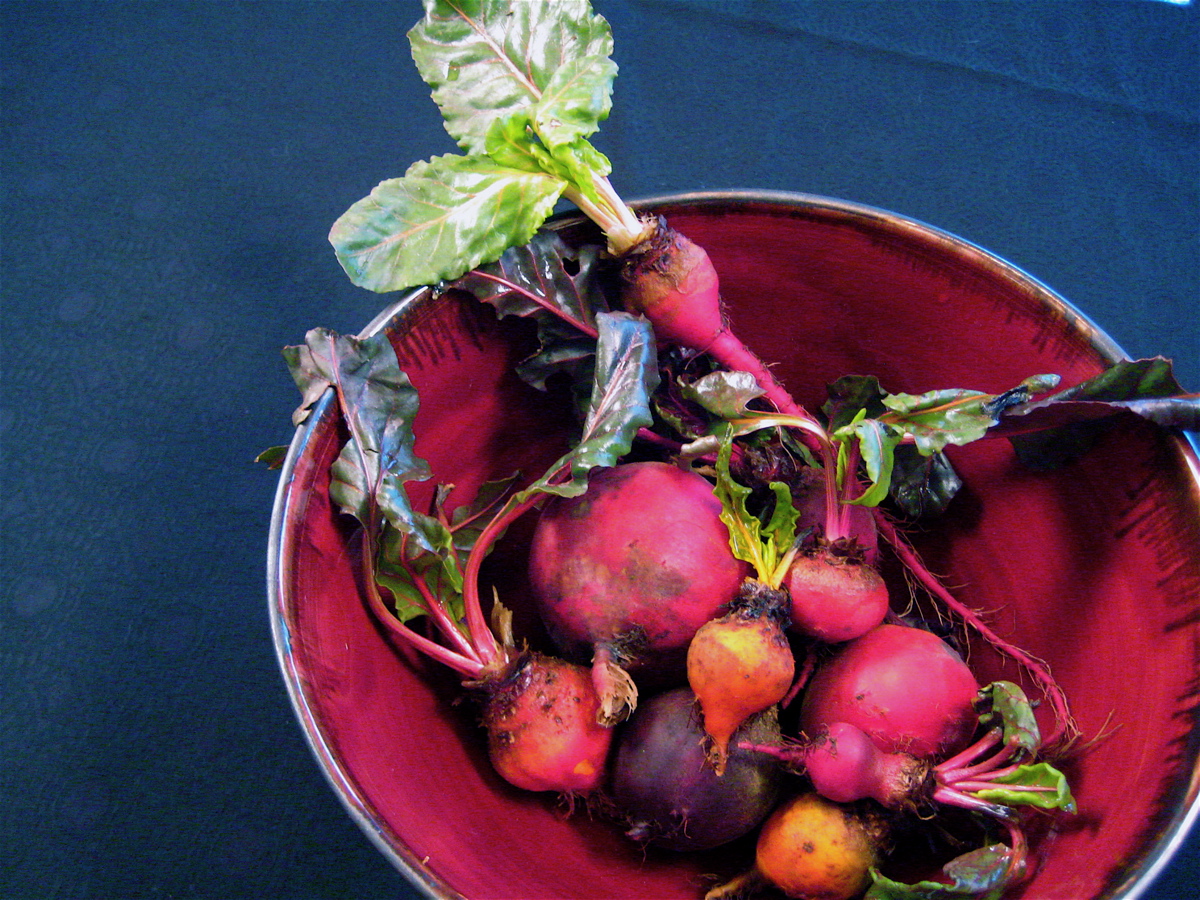 | ||||||||||||||||
|
|
{ welcome! }
 Catie Baumer Schwalb is a chef, food writer and photographer, who splits her life between the city and the country. Not too long ago Catie was a New York City based actress and playwright for more than a decade. She has her Master of Fine Arts from the National Theater Conservatory, and her Grand Diplôme in classic culinary arts from the French Culinary Institute in New York City.
... Read More ≫
Catie Baumer Schwalb is a chef, food writer and photographer, who splits her life between the city and the country. Not too long ago Catie was a New York City based actress and playwright for more than a decade. She has her Master of Fine Arts from the National Theater Conservatory, and her Grand Diplôme in classic culinary arts from the French Culinary Institute in New York City.
... Read More ≫{ get in touch }
{ what's new }
September 12, 2015
August 19, 2013
August 15, 2013
August 13, 2013
August 1, 2013
{ favorites }
{ archives }
Appetizers / Breads & Pastry / Breakfast / Cakes / Canning / Condiments / Dinner / DIY foods / Drinks / Fall / favorites / Grains / Holidays / Local / Noodles & Pasta / Pies & Tarts / Poultry / Salads / Seafood / Snacks / Soup / Spring / Summer / Sweets / Techniques / Vegetables / Vegetarian / Winter /
{ currently reading }
|








